wirecutter
Latest

Wirecutter's best deals: Save $200 on a 13-inch MacBook Pro (2019)
This post was done in partnership with Wirecutter. When readers choose to buy Wirecutter's independently chosen editorial picks, it may earn affiliate commissions that support its work. Read Wirecutter's continuously updated list of deals here.
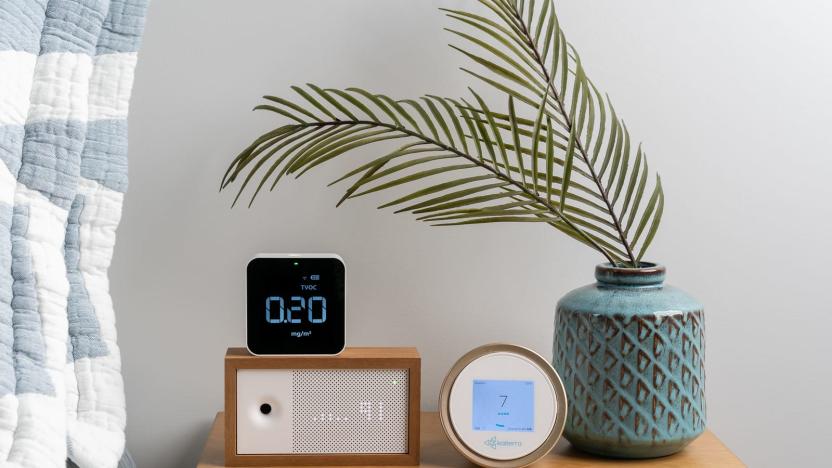
The best home air quality monitor
By Tim Heffernan This post was done in partnership with Wirecutter. When readers choose to buy Wirecutter's independently chosen editorial picks, Wirecutter and Engadget may earn affiliate commission. Read the full guide to home air quality monitors. A good air quality monitor can measure air pollution in your home—though it won't actually do anything to fix it. After living with seven monitors, and using our experience in testing air purifiers to determine how accurate (and necessary) these devices are, we recommend the Kaiterra Laser Egg+ Chemical. With its easy-to-use app, reliable and intuitive information, and versatile smart-home integrations, this is the device we'd turn to first to find out whether an air purifier or HVAC filter was working as expected. With its clean design, simple and efficient physical controls and app, and smart functionality, the Kaiterra Laser Egg+ Chemical provides the most versatility and capability of the monitors we tested. The app itself was the best we tested: stable and logically laid out, with air quality readings that were clearly displayed. And the device is easy to use and live with. A single button cycles through the Kaiterra's readings, and at night, you can shut off the display—while the device continues to monitor the air—so it won't disturb your sleep. And because the Kaiterra has Apple HomeKit and IFTTT support built in—with Google Home and Alexa expected by the end of 2019—you can program the device to automatically turn on a smart air purifier or central AC in the event of poor air quality. Like many of the best monitors we tested, the Kaiterra met a primary requirement to measure several types of pollution that have a meaningful impact on air quality. If you don't need smart functionality or an app, and you just want to be able to glance at a monitor and know what's going on in your air, we recommend the Temtop M10. Like the Kaiterra, it measures particulate and gaseous pollutants, and the two gave virtually identical readings in our testing. Its bright display can be read from across a room, and its tiny size and simple form make it easy to keep on a desk or bedside table. Lacking Wi-Fi connectivity, it has no associated app, let alone smart functionality. But that's not an inherent weakness. It's just a different approach to air quality monitoring that we think will satisfy many people's needs. And the M10 usually costs less too.
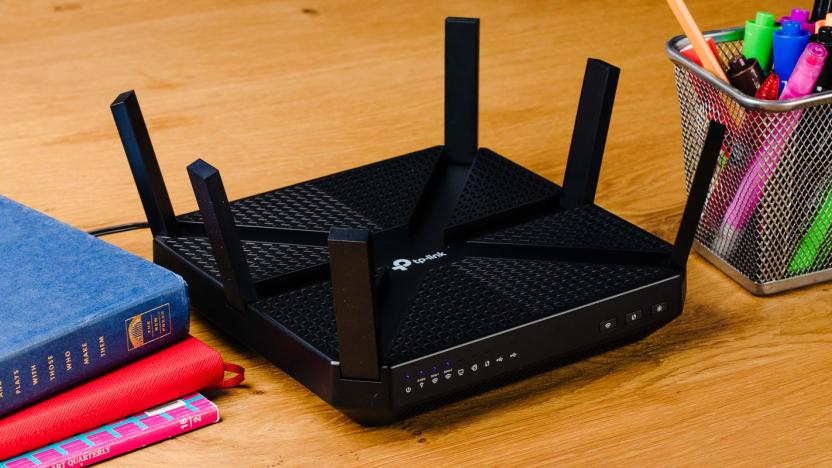
The best WiFi router
By Joel Santo Domingo This post was done in partnership with Wirecutter. When readers choose to buy Wirecutter's independently chosen editorial picks, Wirecutter and Engadget may earn affiliate commission. Read the full guide to Wi-Fi routers.
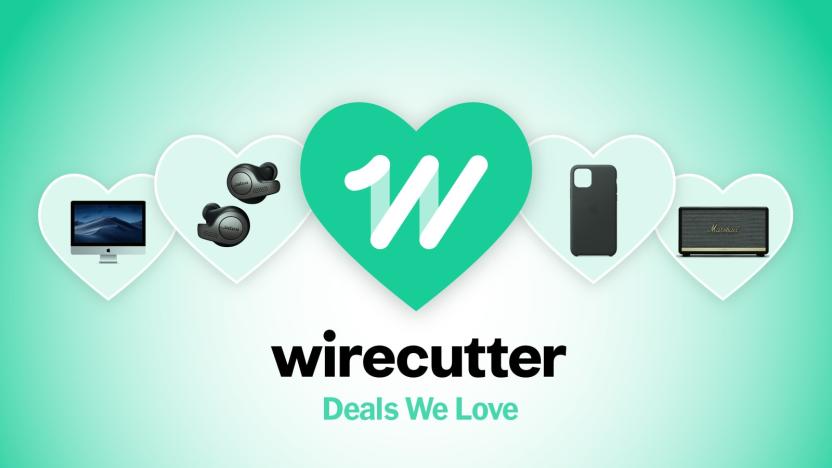
Wirecutter's best deals: Save $200 on a 27-inch Apple iMac
This post was done in partnership with Wirecutter. When readers choose to buy Wirecutter's independently chosen editorial picks, it may earn affiliate commissions that support its work. Read Wirecutter's continuously updated list of deals here.
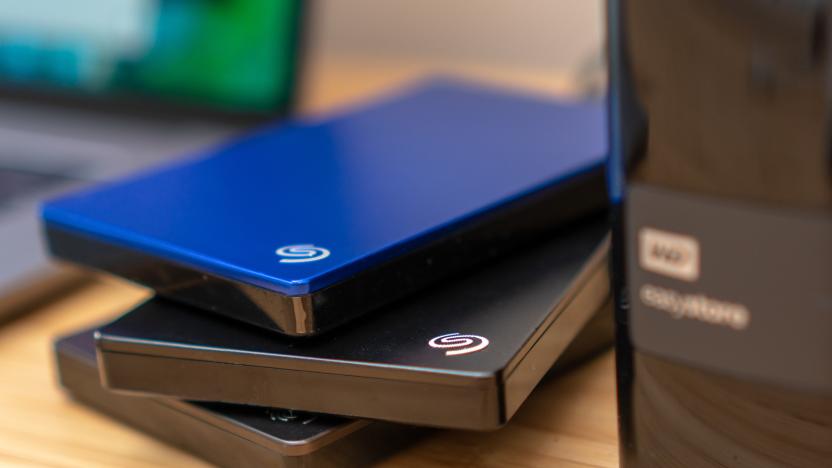
The best external hard drives
By Justin Krajeski This post was done in partnership with Wirecutter. When readers choose to buy Wirecutter's independently chosen editorial picks, Wirecutter and Engadget may earn affiliate commission. Read the full guide to external hard drives. We've spent hundreds of hours researching and testing external drives to find the best options for any use and budget. If you want a dependable external drive that has plenty of storage space for documents and photos and is easy to take on the go, get the 2 TB Seagate Backup Plus Slim. But we also have recommendations if you want more storage space, if you want something more reliable or even faster, or if you need to regularly move large amounts of data from one computer to another with an external drive.
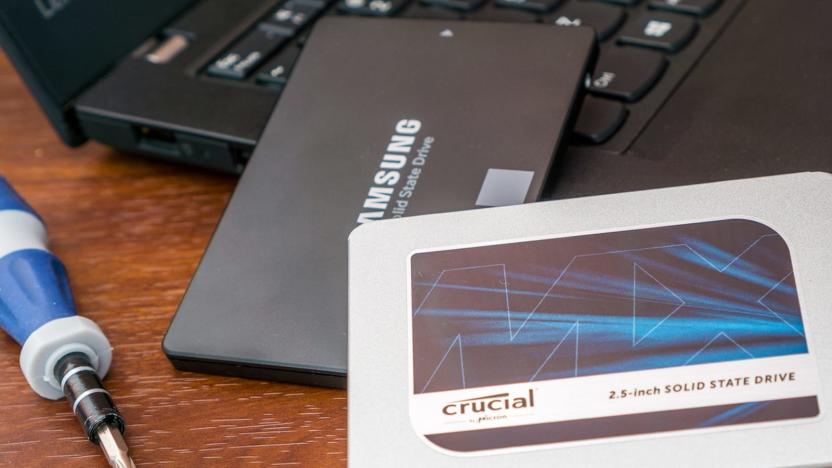
The best SSDs
By Andrew Cunningham This post was done in partnership with Wirecutter. When readers choose to buy Wirecutter's independently chosen editorial picks, Wirecutter and Engadget may earn affiliate commission. Read the full guide to SSDs. Whether you're replacing an existing solid-state drive or upgrading from a traditional hard drive to get better performance, almost every SSD you can buy today is great. But some are still better than others. If you need to buy a SATA SSD right now, we think the 500 GB Crucial MX500 is the best option for most people. The MX500 isn't the fastest SATA SSD you can get, but it comes close, and it has the best combination of price, performance, endurance, and capacity of any drive you can buy. The Crucial MX500 is just a little slower than Samsung's more expensive SATA SSDs in most benchmarks, but most people wouldn't notice the difference. It's as good as or better than the rest of the competition and it performs better when full or near-full than its predecessor, the MX300. It supports full-disk encryption and it comes in both 2.5-inch and M.2 SATA versions, but not the (older, less common) mSATA. Crucial offers a five-year warranty on the drive for more peace of mind (three years is typical), The Samsung 860 Evo replaces the 850 Evo, which was our top SSD pick for nearly three years. Compared with both its predecessor and the Crucial MX500, the 860 Evo is a little faster and offers much better durability. And in addition to the 2.5-inch and M.2 versions, it's available as an mSATA drive, unlike the MX500 and most other modern SSDs. But it's usually more expensive than the MX500, and you won't notice the difference between the two in day-to-day use. The MX500 is the drive to get as long as it's cheaper. Any good SATA SSD will help your PC boot quickly, speed up app launches and load times for games, and generally make your computer more responsive; most people, including gamers, don't need anything faster. But serious video and photo editors, server admins, CAD designers, software developers, and other people with workstation-style demands—anyone who frequently loads and saves large files—may benefit from a faster drive. If that describes you, choose the PCIe Samsung 970 Evo Plus, which can be four or five times faster than the fastest SATA drives. It's more expensive—typically $50 or $60 more than a good SATA drive for 500 GB and around $120 more for 1 TB—and you'll need a desktop or an M.2 PCIe–equipped laptop to use it. Just remember that the difference between a SATA SSD and a PCIe SSD isn't as noticeable as the difference between a SATA SSD and a spinning hard drive. Western Digital's WD Blue SN500 is a budget M.2 PCI Express SSD that's faster than (and around the same price as) the SATA-based MX500 or 860 Evo. It's the best option if you're building a new desktop computer, configuring a barebones mini PC, or upgrading a one- or two-year-old laptop that you bought with a smaller SSD and you want a fast drive for a lot less money than the 970 Evo. But most people will be just fine with a SATA drive (and you also shouldn't upgrade to the SN500 from a SATA SSD of an equal or greater capacity). The SN500 performs well for the price and comes with a solid five-year warranty from a reliable company. But it comes in only 250 and 500 GB capacities, it doesn't support hardware encryption acceleration, and like all M.2 PCIe drives it will work in only newer PCs.

Wirecutter's best deals: Dell's U3419W Ultrawide Monitor drops to $722
This post was done in partnership with Wirecutter. When readers choose to buy Wirecutter's independently chosen editorial picks, it may earn affiliate commissions that support its work. Read Wirecutter's continuously updated list of deals here.

The best wireless charging station now that Apple AirPower is dead
By Nick Guy This post was done in partnership with Wirecutter. When readers choose to buy Wirecutter's independently chosen editorial picks, Wirecutter and Engadget may earn affiliate commission. Read the full guide to wireless charging stations now that Apple AirPower is dead. Apple's never-released AirPower charging station was an embarrassment for the company; it was the rare product that Apple announced, then cancelled before it could be released. But with so much interest in an all-in-one wireless charging station for an iPhone, an Apple Watch, and AirPods, accessory companies have stepped in to fill the void. Having tried them all, we think Mophie's 3-in-1 Wireless Charging Pad is the best. If you have an iPhone, an Apple Watch, and AirPods with a wireless charging case, you may want to charge all three on a daily basis, and the Mophie 3-in-1 Wireless Charging Pad is the best option to do so wirelessly. An indentation in the shape of the AirPods case means you don't have to fuss with lining up the AirPods, and the grippy edge prevents your phone from moving around, even if it vibrates with notifications. Plus your watch will charge in landscape orientation so that you can utilize Nightstand mode and keep the time displayed. It charges everything just as quickly as the competition, but the design is both more attractive and more thoughtful. No other charging station offers any combination of better features, and they all cost about the same. If you (gasp) don't have AirPods or would rather have the ability to charge a second phone—your partner's or a work phone, for example—we recommend the Zens Dual+Watch Aluminum Wireless Charger. While you can still charge AirPods, this flat design allows you the freedom to swap in whatever Qi-compatible device you choose. But if you do have AirPods, it's less convenient since it can be hard to align the case just right, and the elevated Apple Watch charging puck isn't as handy if you use the watch as an alarm clock.

The best smart outdoor lighting for backyards, pathways and more
By Rachel Cericola This post was done in partnership with Wirecutter. When readers choose to buy Wirecutter's independently chosen editorial picks, Wirecutter and Engadget may earn affiliate commission. Read the full guide to smart outdoor lighting for backyards, pathways, and more. Outdoor lighting isn't a splurge—it can save you from tripping on a dark pathway (again) or having to fumble for the right key. It enhances home security, and it can even light up a party. Smart outdoor lighting takes it to another level by adding automation, remote control, and other convenience features. We spent a month testing outdoor-rated smart bulbs, sconces, path lights, and spotlights, and found the best options for every outdoor scenario. The only smart outdoor bulb we tested with a built-in motion sensor, the floodlight-style Sengled Smart PAR38 LED Bulb can light up a driveway or backyard when you need it and not when you don't. It requires a Zigbee hub, but it also works directly with an Amazon Echo Plus. The motion sensor is especially useful if you want an outdoor bulb for security purposes, and you can adjust its settings so that it doesn't trigger too frequently or at the wrong time. The Ring Pathlight offers a near-instant option for providing helpful and elegant lighting to areas that may be tricky to navigate in the dark such as walkways or patios. It's powered by four D batteries, so you have no wires to deal with, and you can directly control it using an app or set it to turn on and off automatically through a built-in motion sensor. Because this model relies on non-rechargeable batteries, it's meant to light up for short periods of time—less than 15 minutes—so it may not be the best choice for anyone who needs constant lighting. The Philips Hue White and Color Ambiance Calla Bollard is the best-looking smart outdoor light we tested—it's a perfect addition to any party. It has a slick design with a color-changing, dimmable LED at the top that can match outdoor decor or your mood. It does require a hub, such as the Hue Bridge, the Amazon Echo Plus, or the SmartThings Hub. It also requires a power supply (included in the base kit), which can accommodate up to five fixtures.

Wirecutter's best deals: The Eero Pro mesh networking kit, and more!
This post was done in partnership with Wirecutter. When readers choose to buy Wirecutter's independently chosen editorial picks, it may earn affiliate commissions that support its work. Read Wirecutter's continuously updated list of deals here.
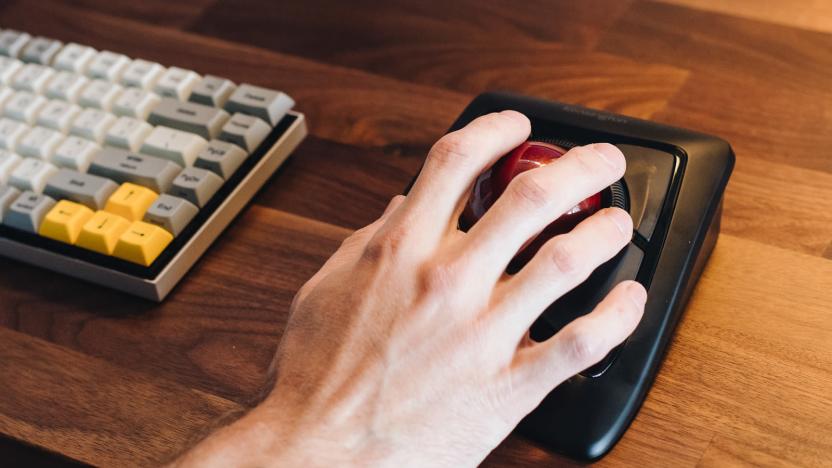
The best trackballs
By Thorin Klosowski This post was done in partnership with Wirecutter. When readers choose to buy Wirecutter's independently chosen editorial picks, Wirecutter and Engadget may earn affiliate commission. Read the full guide to trackballs. After spending more than 120 hours testing eight trackballs during weeks of work, we found that the best trackballs are the finger-operated Kensington Expert Mouse Wireless Trackball and the thumb-operated Logitech MX Ergo Wireless Trackball. We also have budget picks—the Kensington Orbit Trackball with Scroll Ring and the Logitech M570 Wireless Trackball—if you don't mind sacrificing build quality and a couple of features for a more affordable trackball. Finger-operated trackballs with center-mounted balls work for both right- and left-handed people and encourage better wrist posture, while thumb-operated trackballs are more similar to traditional mice and therefore easier to get the hang of using. (For more information, see Should you switch to a trackball? below.)

The best iPhone screen protectors
By Nick Guy This post was done in partnership with Wirecutter. When readers choose to buy Wirecutter's independently chosen editorial picks, Wirecutter and Engadget may earn affiliate commission. Read the full guide to iphone screen protectors. You don't have to spend as much as a few trips to the movies on a good glass screen protector for your iPhone—after testing six models, we found the affordable Maxboost Premium Tempered Glass Screen Protector to be the best for the iPhone XS/11 Pro, XS Max/11 Pro Max, and XR/11. It covers the entire active area of the iPhone's display, it's crystal clear, it's as scratch-resistant as anything else we tested, and fingerprints wipe right off. It includes a nice selection of cleaning tools, and we found installation to be easy enough. And if you get a speck of dust under the glass on your first attempt, it's not the end of the world—you get three Maxboost protectors in each package. A glass screen protector can't guarantee that you won't break your iPhone's screen. But it can prevent the screen from getting scratched, and scratches can affect glass' structural integrity and make cracks more likely. Glass is more protective than film, and it comes closer to the look and feel of the iPhone's own display. TechMatte's amFilm Tempered Glass Screen Protector for iPhone X/XS/11 Pro, XS Max/11 Pro Max, and the XR/11 uses similar glass as our top pick for the iPhone 8 and 8 Plus, but the included alignment tool has a little more wiggle room than the Maxboost protector for the iPhone X and later, making a perfect installation more difficult. It comes with three pieces of glass, though, meaning that if our pick goes out of stock or jumps in price, you can still get a great protector—and a few shots at a perfect installation—for a good price.

Wirecutter's best deals: Sony's DualShock 4 controller drops to $35
This post was done in partnership with Wirecutter. When readers choose to buy Wirecutter's independently chosen editorial picks, it may earn affiliate commissions that support its work. Read Wirecutter's continuously updated list of deals here.

The best wireless mouse
By Justin Krajeski This post was done in partnership with Wirecutter. When readers choose to buy Wirecutter's independently chosen editorial picks, Wirecutter and Engadget may earn affiliate commission. Read the full guide to wireless mice. After researching 42 wireless mice and testing 14, we found that the Logitech M720 Triathlon Multi-Device Wireless Mouse is the best wireless mouse for most people because it is more comfortable to use than nearly every other mouse we tested, connects easily via a USB dongle or Bluetooth, and tracks well on most surfaces. Because of its tall, arched back, the Logitech Triathlon fit into our testers' hands nicely. It was more comfortable than similarly priced options. We never experienced any issues connecting it to both Mac and Windows laptops via USB dongle or Bluetooth, and it can pair with—and quickly switch between—three Bluetooth-compatible devices. Logitech claims that the Triathlon's battery can last for two years; we've been using the same mouse for about 15 months, and it has yet to die. It also has six programmable buttons you can customize using Logitech's Options software and a scroll wheel that toggles between ratcheted and freewheel scrolling. If the Logitech M720 Triathlon is unavailable, we recommend the Logitech M585 Multi-Device Wireless Mouse or the Logitech M590 Silent Wireless Mouse. Both mice have tall 1.6-inch-high backs, and our testers generally found they fit their hands as comfortably as the Triathlon even though they're a little smaller. They can connect through a USB dongle or pair with up to two devices via Bluetooth, unlike the Triathlon's three. Logitech claims that the battery will last for two years. The M585 and M590 have one fewer button than our top pick, and you can customize any of their five buttons with Options. While our panel preferred the Logitech M590's silent buttons, which still provide feedback without a loud, physical click, the mouse is not as widely available or as affordable as the M585. If you spend all day using a mouse, we recommend the Logitech MX Master 2S Wireless Mouse for its comfortable design, its buttons, and its secondary thumb scroll wheel. Since it's nearly a half-inch wider and longer than the Triathlon, our panel found it comfortable for all grips and hand sizes, especially those with bigger hands. It's more than twice as expensive, but it did track even more precisely than the Triathlon in our testing. Like the Triathlon, it can connect to and switch between up to three devices via Bluetooth or dongle. The MX Master 2S has a rechargeable battery that can last for about two months on a single charge. It has six programmable buttons—as many as the Triathlon—that can be customized with Logitech Options software, and it offers a second scroll wheel for your thumb. The Logitech MX Master 3S Wireless Mouse has improved button placement below the thumb scroll wheel, and it's a tad more comfortable to use, but at the time of this writing it's too expensive to recommend over the 2S. If the price drops below $85, it's the best mouse for people who spend all day using one. Our portable pick is the Logitech Anywhere 2S Wireless Mouse. The Anywhere 2S is smaller than most mice we tested—and its back arch was about a half-inch shorter than the Triathlon's—but we found that it was still really comfortable to use over long periods of time. Like all of our picks, it can connect via USB dongle or Bluetooth; it can wirelessly connect with up to three devices. Like the MX Master 2S, the Anywhere 2S has a rechargeable battery that can last for around two months before you'll need to recharge it. It has five programmable buttons (one is hiding behind its scroll wheel), and it offers Options software for you to customize each button to your liking.

Wirecutter's best deals: Save $25 on an Amazon Echo Show 5
This post was done in partnership with Wirecutter. When readers choose to buy Wirecutter's independently chosen editorial picks, it may earn affiliate commissions that support its work. Read Wirecutter's continuously updated list of deals here.

The best personal blender
By Lesley Stockton This post was done in partnership with Wirecutter. When readers choose to buy Wirecutter's independently chosen editorial picks, Wirecutter and Engadget may earn affiliate commission. Read the full guide to personal blenders. After spending 28 hours researching two dozen personal blenders and testing 12 models in our test kitchen, we think the NutriBullet Pro 900 Series offers the best balance of power, simplicity, convenience, and price for most people. We pureed almost 25 pounds of frozen fruit, hearty kale, fibrous ginger, gooey peanut butter, and sticky dates into thick smoothies to come to this conclusion. The NutriBullet won us over with its blending abilities, ease of use, and price. The powerful motor didn't strain blending thick mixtures, and it pureed tough kale and frozen fruit into a satisfying drinkable consistency. The blending quality is on par with midrange full-sized blenders without the bulk of a large machine. If you regularly buy a smoothie on your way to the office or class, the NutriBullet Pro will pay for itself within a month. We like the Tribest PB-150 because it's durable and offers the smallest footprint of all our picks. Although the Tribest isn't the most powerful machine on paper—it has a weaker motor and the smallest cups of all our picks—it blends really well for most food prep tasks you'd need it for. Compared to the NutriBullet and Breville Boss To Go, smoothies from the Tribest are thinner due to the extra liquid needed to get a consistent blend. But it's built to last and a solid performer if you don't mind slightly thinner smoothies. The Breville Boss To Go offers smoother blending, sleeker design, and a better travel lid than our top pick. The Boss To Go blended kale the finest, and berry seeds were the smallest of all our picks. The Breville blends thick mixtures easily without straining. The stainless steel housing and sleeker design will look good on your countertop, and the travel lid has the largest opening of all the blenders we tested for easier drinking.
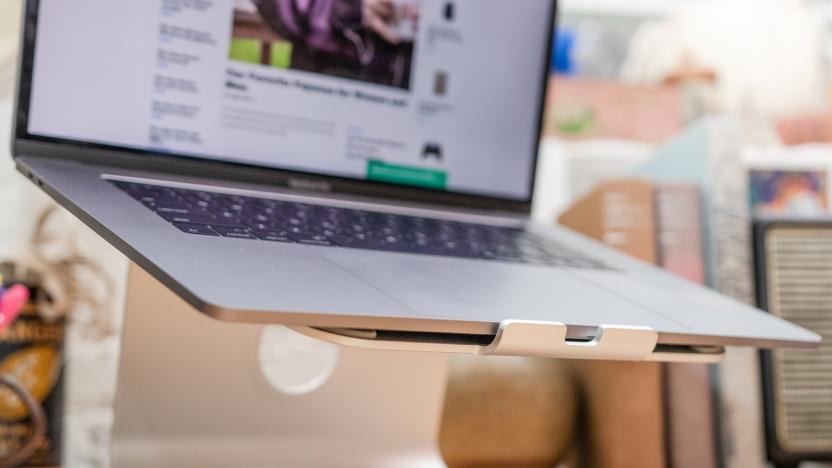
The best laptop stands
By Justin Krajeski and Kimber Streams This post was done in partnership with Wirecutter. When readers choose to buy Wirecutter's independently chosen editorial picks, Wirecutter and Engadget may earn affiliate commission. Read the full guide to laptop stands. After years testing 17 laptop stands at work and in our home offices, we found that the Rain Design iLevel 2 is the best stand for anyone who spends hours every day hunched over a laptop at their desk. None of the other laptop stands we tested matched the iLevel 2's combination of stability, adaptability, and sleek style. Paired with a wireless mouse and an external keyboard, the iLevel 2 can help fix your posture and reduce neck and arm pain. The Rain Design iLevel 2's exceptional build quality and easy adjustability are worth paying for if you need a laptop stand. It held 11-inch to 15-inch laptops with a sturdy grip in our tests, and it has a simple, straightforward design that looks stylish. It's easier to adjust than every other adjustable laptop stand we tested, too: its platform tilts upward when you slide a knob from the left to right. If you want a more affordable laptop stand that looks nicer than a stack of books, the best option is the Rain Design mStand. Like the iLevel 2, the sturdy, aluminum mStand held laptops up to 15 inches in our tests, plus it has a hole for cable management and a nook to store your keyboard. But unlike our other picks, it isn't adjustable. If you need a laptop stand to take between work and home or to use while traveling, the Roost Laptop Stand is the sturdiest and most compact portable option we tested. The Roost is pretty easy to set up and collapse, and it doesn't sacrifice stability; when you're done using the lightweight model for the day, you can fold it into a long, thick stick. Switching between the Roost's three height settings is a bit tricky, but doing so gets easier with practice. The Nexstand Laptop Stand is a decent and affordable portable option if you're willing to give up some portability and ease of use. It's similar to the Roost in design and height, and it's comparably simple to set up and break down. It was stable enough for laptops up to 15 inches in our tests, but it can be less secure than the Roost if you're not careful; for example, its six height settings aren't clearly demarcated from one another, so you need to double-check that your laptop stand is fully locked before placing a laptop on top of it. The Nexstand is a bit bigger and heavier than the Roost, too.

Wirecutter's best deals: Apple's 7th-gen iPad (128GB) drops to $400
This post was done in partnership with Wirecutter. When readers choose to buy Wirecutter's independently chosen editorial picks, it may earn affiliate commissions that support its work. Read Wirecutter's continuously updated list of deals here.
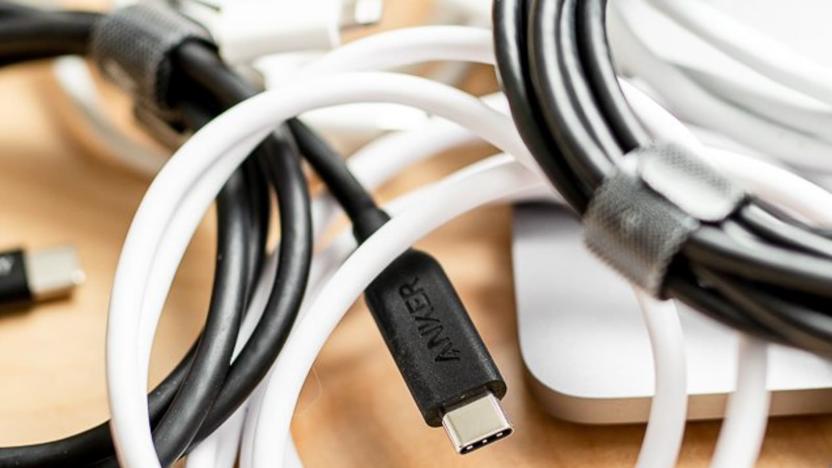
The best USB-C cables and adapters
By Sarah Witman This post was done in partnership with Wirecutter. When readers choose to buy Wirecutter's independently chosen editorial picks, Wirecutter and Engadget may earn affiliate commission. Read the full guide to USB-C cables and adapters. If you have a device with a USB-C port—like a MacBook or Android phone, or 2018 iPad Pro—you're going to need some cables. Unfortunately, when it comes to USB-C, even cables that look identical can perform very differently. Your MacBook's charging cable, for example, has the exact same connectors at each end as a top-speed Thunderbolt 3 cable, but it's different internally; it transfers data at a snail's pace, and it can't send a video signal. To make sure you get the right cable for your needs, we've tested 36 cables and 16 adapters to find the best ones for charging, data transfer, video, and more.
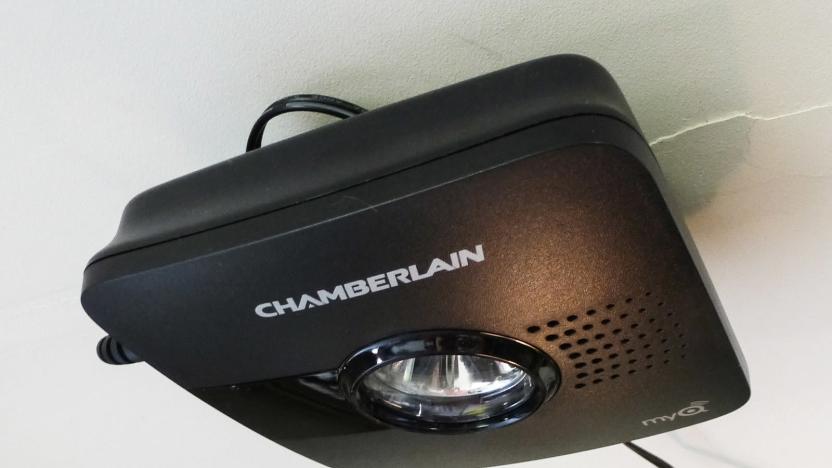
The best smart garage-door controller
By Jennifer Pattison Tuohy This post was done in partnership with Wirecutter. When readers choose to buy Wirecutter's independently chosen editorial picks, Wirecutter and Engadget may earn affiliate commission. Read the full guide to smart garage-door controllers. After spending over 20 hours wiring and rewiring garage-door openers, opening and closing the doors with our smartphones and our voices, and controlling them through smartphone apps and home-automation routines, we found that the Chamberlain MyQ Garage (MYQ-G0301) is the best smart garage-door controller for most people. It was the easiest and quickest to install of all the controllers we tested, it's among the simplest to set up and use, and it's compatible with the most garage doors out there, thanks to the huge popularity of Chamberlain and LiftMaster products in homes across the country. It also integrates with the popular Nest Cam if you want a remote view of your garage. With the addition of an optional bridge, MyQ can work with Apple's HomeKit smart-home platform, too. Chamberlain's MyQ Garage is a great choice for extending the remote-control operation of your garage door beyond your home. The MyQ Garage integrates with Nest, Wink, and Xfinity Home smart-home hubs. Apple HomeKit compatibility is available with the purchase of the MyQ Home Bridge, and Google Home and IFTTT are offered for a $10 annual subscription. MyQ can also integrate with the Google Assistant on smart devices, like the Google Home, but you'll have to pay for an integration service ($1 per month or $10 for a year). The MyQ Garage also works with the MyQ smart light switch and smart lamp controller, letting you turn on the lights and air conditioning as you open the garage door, if you like. It is also compatible with Amazon's Key in-garage service for Amazon Prime customers in certain cities. Of the controllers we tested, the Gogogate2 boasts the most useful features and is the smallest, most lightweight, and least obtrusive (the MyQ Garage comes in a close second in size). Its app opened and closed the door seamlessly and simply every time. It's compatible with a wide range of garage doors, and it integrates directly with many IP security cameras if you want to see your garage door in real time. You can also check the temperature inside your garage, share access with up to 10 users for free, and automatically open and close your door using geolocation and voice, through integration with IFTTT and Amazon's Echo. The downsides are a more complicated install than for the other units we tested, little support for integration with smart hubs despite its smarts, and the lack of an ability to set custom alerts when the garage door is left open. If you already have a smart-home automation system installed, and you find the Gogogate2's lack of hub compatibility to be a dealbreaker, the GoControl/Linear Z-Wave Garage Door Opener Remote Controller is the most "vanilla" model out there, with Z-Wave control allowing you to add as many sprinkles and toppings as you are comfortable with through your choice of hub. The GoControl is the least expensive option for off-site remote control of your garage door.